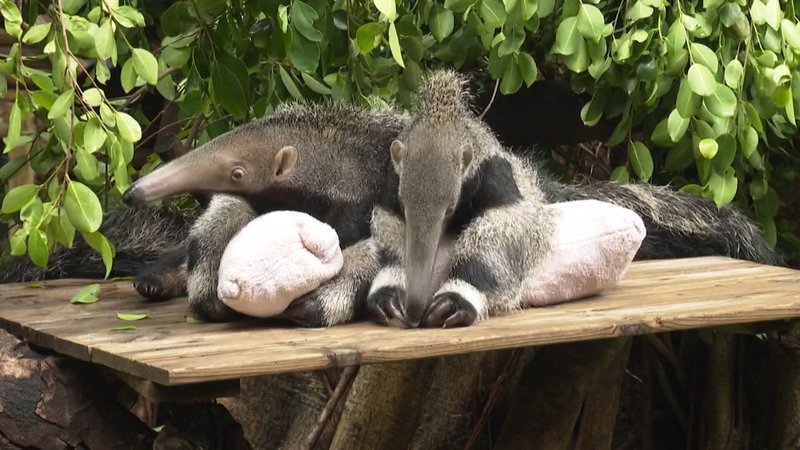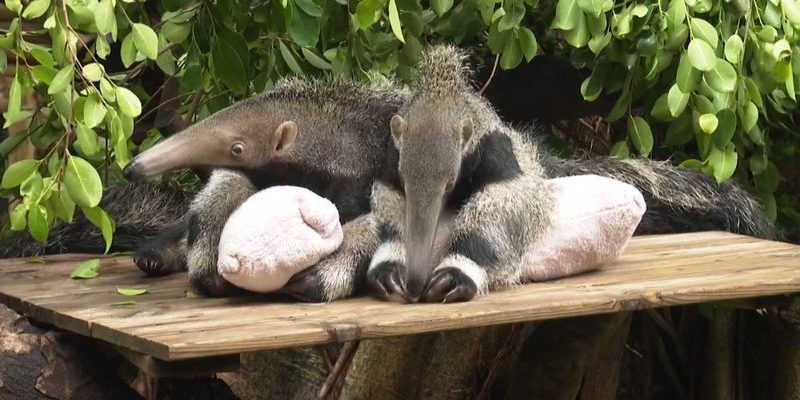
Picture this: a mother anteater comes across a mound of tasty termites after a long day of foraging. All the while, she’s got a baby clinging to her back, nestled up in a cozy spot. This scene is pretty typical for anteater moms, as they manage to juggle motherhood and their natural instincts for food, all while keeping their young ones safe. So, how do these unique animals ensure their young have the best start in life? Grab your favorite drink, and let’s explore the different aspects of anteater parenting.
The Basics of Anteater Parenting
Anteater parenting revolves around the bond between the mother and her offspring. Typically, female anteaters give birth to a single baby after a gestation period of about 190 days. That’s roughly six months! When the baby is born, it weighs only about a pound, but don’t let that fool you; it grows quickly. The mother’s role becomes crucial at this stage. She instinctively knows how to care for her little one, providing warmth and protection in the wild.
The baby anteater, often called a pup, starts off life completely dependent on its mother. For the first few weeks, it will cling to her back, where it can stay safe while she forages for food. This not only keeps the pup protected from predators, which can be a serious concern in the wild, but it also helps the mother efficiently hunt for insects like ants and termites. Honestly, it’s a pretty clever system that works well for both parties.
One fascinating thing about anteaters is how they teach their pups to find food. The mother will often guide the baby toward termite mounds and demonstrate how to dig for insects. Over time, the pup learns by watching and mimicking her actions. When the pup is ready to explore on its own, it will begin to venture a little farther away, always returning to check in with mom. This nurturing approach ensures that the young anteater grows up well equipped for survival.
Feeding and Nutrition: A Mother’s Duty
In the wild, the anteater’s diet consists mostly of ants and termites. As a mother, she has the important job of ensuring her young one gets enough nutrition. After birth, a mother anteater produces nutrient-rich milk to feed her pup. This milk is vital for the baby’s growth and development, providing all the energy it needs to thrive.
When the pup starts to eat solid food, the mother introduces it to the tasty bugs that make up their diet. It’s not just about quantity; she also teaches her pup about the best locations to find food, whether it’s a hidden mound or a particularly busy ant trail. Here’s the thing: anteaters have a special tongue that can extend up to 16 inches long, perfect for reaching deep into mounds. The mother shows her pup how to use this amazing tool effectively, ensuring that it learns how to feed itself properly.
You might be wondering how long this feeding process lasts. Generally, young anteaters will stay with their mothers for about a year, continuing to learn and grow. During this time, they solidify their foraging skills and become adept hunters. After this period, they’re ready to establish their own territories.
Bonding Through Exploration
The bond between a mother and her pup goes beyond just feeding—it’s about the experiences they share. As the baby anteater grows, it becomes more curious and adventurous. The mother plays a significant role in guiding her young one through the vast landscapes of their habitat.
Every day, the duo embarks on foraging trips, which also serve as bonding moments. These outings allow the mother to teach her pup not only about food but also about avoiding dangers in their environment. For instance, she might lead her pup away from dense thickets where predators like big cats might lurk. The pup learns to recognize potential threats, developing instincts crucial for survival.
Mother anteaters are also known for their patience. They allow their pups to explore different areas, even if it means a bit of distance. This gradual independence builds confidence in the young anteater, preparing it for life on its own. It’s like when you watch a toddler take their first few steps; there’s a sense of pride and excitement in those small victories.
Protection Against Predators
In the wild, baby anteaters face numerous challenges, starting with the threat of predators. A mother anteater must be vigilant, keeping an eye out for animals that might prey on her pup. Their main predators include jaguars, pumas, and even large birds of prey. With risks around every corner, the mother’s protective instincts kick in.
To keep her young one safe, the mother anteater uses a few clever strategies. While foraging, she often positions herself between her pup and potential dangers. If she senses a threat, she’ll quickly guide her baby to a safer spot, using her keen senses to detect sounds and movements in the environment. This constant vigilance highlights the crucial role a mother plays in her young’s survival.
The pup, in turn, learns how to hide—whether it’s crouching in the underbrush or tucking close to mom. This learned behavior helps prepare them for when they eventually venture out on their own. The skills they pick up during this formative time can mean the difference between life and death in the wild.
Teaching Social Skills and Independence
As pups grow, learning to interact with the world around them becomes essential. Anteaters are generally solitary creatures, but social skills are still crucial for both bonding and survival. It’s fascinating how a mother anteater provides these lessons, offering her pup a chance to observe and practice social behaviors.
During their foraging excursions, the mother will sometimes encounter other anteaters. This social interaction, though not frequent, is vital. Watching older anteaters interact helps the pup understand boundaries, communication, and competition over resources. Although they don’t form packs like wolves, they do engage socially when necessary.
Eventually, the time comes for the mother to let go. With a year’s worth of life lessons, the young anteater is ready to find its own territory. The mother will gradually reduce the amount of time spent with her pup, encouraging independence while still offering guidance when needed. It’s an emotional moment, much like sending a child off to school for the first time.
Raising young anteaters is a beautiful blend of instinct, nurturing, and learning. From the first moments of life to the day they venture out on their own, the bond between a mother and her pup is truly special. Through feeding, exploration, and protection, the mother anteater not only ensures her young one’s survival but also prepares it for a life filled with challenges and adventures.
In the wild, every day brings new lessons and experiences. Mother anteaters like to create a safe haven where their young can learn to thrive. Understanding how they raise their offspring gives us a deeper appreciation for these remarkable creatures. So, the next time you catch sight of an anteater in the wild, remember the incredible journey of love and survival that characterizes their parenting. It’s a story worth sharing, just like any good tale over a cup of coffee.

